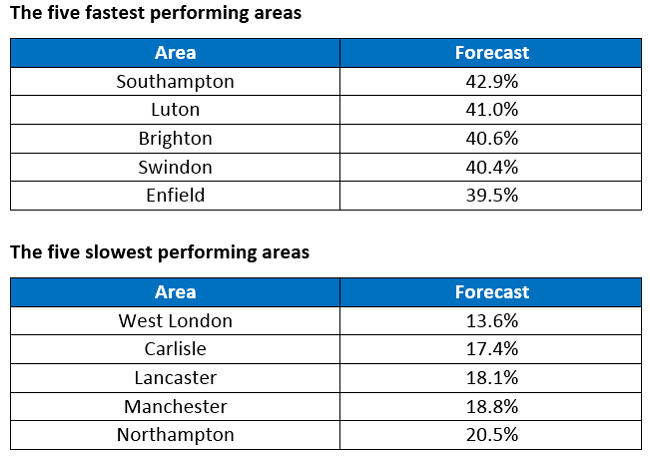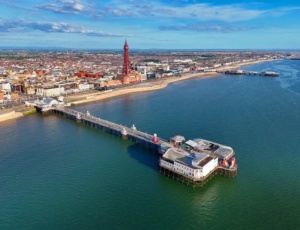House prices to rise 30% by 2019, new Rightmove and Oxford Economics forecast reveals
 Average house prices in England and Wales are set to increase by 30% in the next five years, with the national forecast reinforcing the north/south divide.
Average house prices in England and Wales are set to increase by 30% in the next five years, with the national forecast reinforcing the north/south divide.
While prices in London are set to rise by almost 33%, the real beneficiary of the recent London boom will be the South East, forecast to increase by 37% by 2019. The North West will be the slowest riser according to the forecast, but will still go up by 24%.
The new forecast comes from a collaboration between the UK’s number one property website Rightmove and leading economic forecaster Oxford Economics. It is the most comprehensive house price forecast of its kind ever created, based on property and economic data rather than opinion and short-term market factors. It takes into account both asking and sold prices, surveyor valuations and analytics from the Oxford Economics’ Global, Industry and Regional forecasting models.
The majority of fastest performing areas are all within easy commuting distance of London – towns such as Southampton (+43%), Luton (+41%) and Brighton (+41%) – with the home counties and outer boroughs set to benefit from the ripple effect of a year of strongly rising prices in London, alongside the brighter economic picture. Prices in the capital itself are forecast to rise at a slower rate than the South East and East Anglia with prime central London having a period of much slower growth after the frenetic increases of 2014.
West London is predicted to be caught in the prime London slowdown with a modest rise of 14%, bringing its potential for future growth in line with the slower northern cities of Carlisle (+17%) and Manchester (+19%).
The forecast uses hundreds of items of economic data to forecast growth, economic performance and the resulting house price inflation. The forecast compares and contrasts the fortunes of neighbouring areas, and takes into account the effect of strong house price growth in one location spilling over into adjoining areas.
Economic factors that are more significant in some markets than others are also considered, for example the exchange rate has a big effect on house prices in prime central London, but is of rather less direct importance in the wider suburban markets of the South East and further afield, where employment and population growth are key.
Miles Shipside, Rightmove director and housing market analyst comments:
“Alongside the publication of the Rightmove monthly House Price Index which is based on new seller asking prices, we have unique access to other sources of property data from surveyors and property transaction prices at a very local level. This has enabled us to work with Oxford Economics to create a unique forecast that can be used as a guide by a number of businesses.
“Understanding the path of future house price growth is a key element of UK economic strategy and decision making, and our data driven forecasts contain insight not previously available from other commentators or the Government’s own forecasts produced by the Office for Budget Responsibility.”




